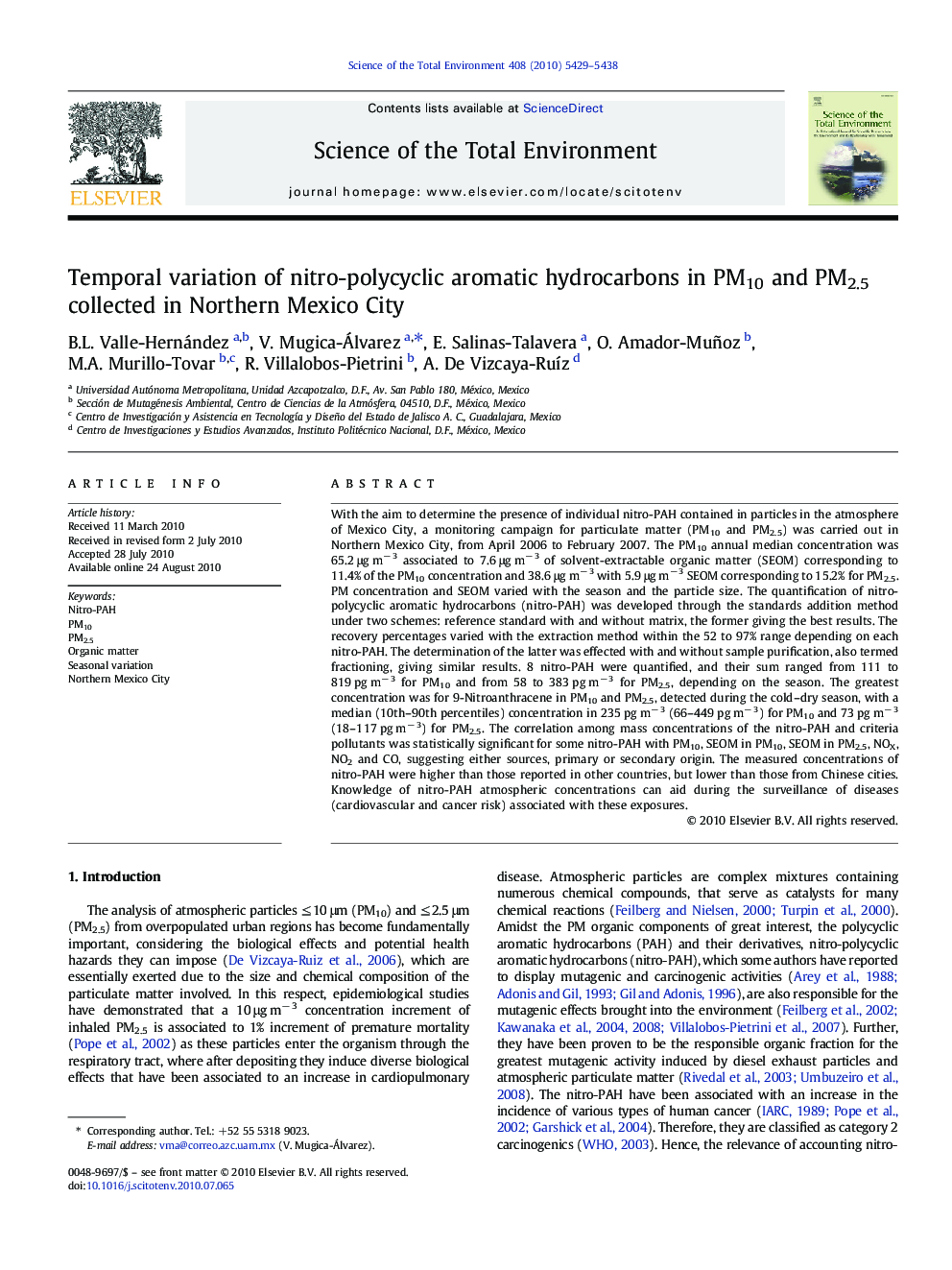| Article ID | Journal | Published Year | Pages | File Type |
|---|---|---|---|---|
| 4431520 | Science of The Total Environment | 2010 | 10 Pages |
With the aim to determine the presence of individual nitro-PAH contained in particles in the atmosphere of Mexico City, a monitoring campaign for particulate matter (PM10 and PM2.5) was carried out in Northern Mexico City, from April 2006 to February 2007. The PM10 annual median concentration was 65.2 μg m− 3 associated to 7.6 μg m− 3 of solvent-extractable organic matter (SEOM) corresponding to 11.4% of the PM10 concentration and 38.6 μg m− 3 with 5.9 μg m− 3 SEOM corresponding to 15.2% for PM2.5. PM concentration and SEOM varied with the season and the particle size. The quantification of nitro-polycyclic aromatic hydrocarbons (nitro-PAH) was developed through the standards addition method under two schemes: reference standard with and without matrix, the former giving the best results. The recovery percentages varied with the extraction method within the 52 to 97% range depending on each nitro-PAH. The determination of the latter was effected with and without sample purification, also termed fractioning, giving similar results. 8 nitro-PAH were quantified, and their sum ranged from 111 to 819 pg m− 3 for PM10 and from 58 to 383 pg m− 3 for PM2.5, depending on the season. The greatest concentration was for 9-Nitroanthracene in PM10 and PM2.5, detected during the cold–dry season, with a median (10th–90th percentiles) concentration in 235 pg m− 3 (66–449 pg m− 3) for PM10 and 73 pg m− 3 (18–117 pg m− 3) for PM2.5. The correlation among mass concentrations of the nitro-PAH and criteria pollutants was statistically significant for some nitro-PAH with PM10, SEOM in PM10, SEOM in PM2.5, NOX, NO2 and CO, suggesting either sources, primary or secondary origin. The measured concentrations of nitro-PAH were higher than those reported in other countries, but lower than those from Chinese cities. Knowledge of nitro-PAH atmospheric concentrations can aid during the surveillance of diseases (cardiovascular and cancer risk) associated with these exposures.
